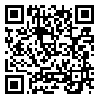Volume 67, Issue 10 (1-2010)
Tehran Univ Med J 2010, 67(10): 718-723 |
Back to browse issues page
1- Otorhinolaryngology Research Center, Tehran University of Medical Sciences.
2- Otorhinolaryngology Research Center, Tehran University of Medical Sciences. ,zmokhtari@razi.tums.ac.ir
2- Otorhinolaryngology Research Center, Tehran University of Medical Sciences. ,
Abstract: (4232 Views)
Background: Laryngotracheal stenosis is one of the most challenging problems for otolaryngologists. Several methods were developed to treat this problem. However, in many cases, this symptom could be recurred and the patients would suffer from operations for treatment. In this survey, the effect of topical mitomycin-C after laser therapy and dilatation for preventing laryngotracheal stenosis is considered. Methods: Twenty three cases suffered from laryngotracheal stenosis were studied in a clinical trial between years 2006-2007 in Amir-alam educational Hospital in Tehran, Iran. The patients were divided into two groups. In 12 patients (case group), we used topical mitomycin-C (1mg/ml for 4 min) after dilatation and laser therapy, and in 11 of them (control group), this solution was not used. All patients were controlled by endoscopy one and three months later, and then followed up. The results of this study were compared statistically. Results: In the control group after treatment (dilatation and laser), the average changed- vertical and horizontal lengths of stenosis were 0.47±0.77mm and 0.50±0.60mm respectively. However in the control group these changed averages were 2.28±1.15mm and 2.23±1.03mm, respectively after treatment (p<0.0001). The average changed cross section between the two groups were different significantly (p<0.0001), too. Conclusions: In the laryngotracheal stenosis, the use of topical mitomycin-C could reduce the recurrence of the stenosis after dilatation and after the laser procedures. In addition, the need for repeated therapy will be reduced.
| Rights and permissions | |
 |
This work is licensed under a Creative Commons Attribution-NonCommercial 4.0 International License. |


